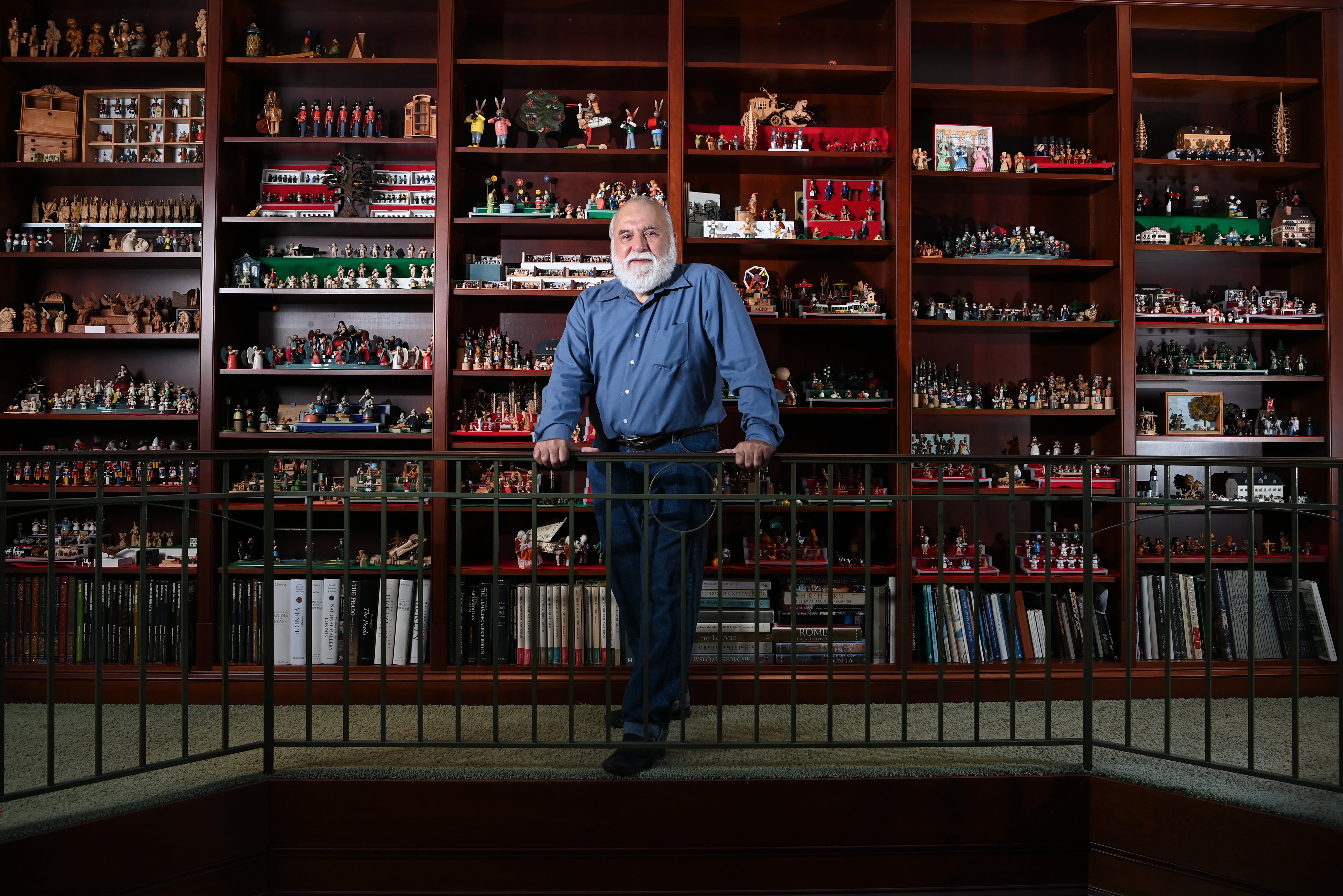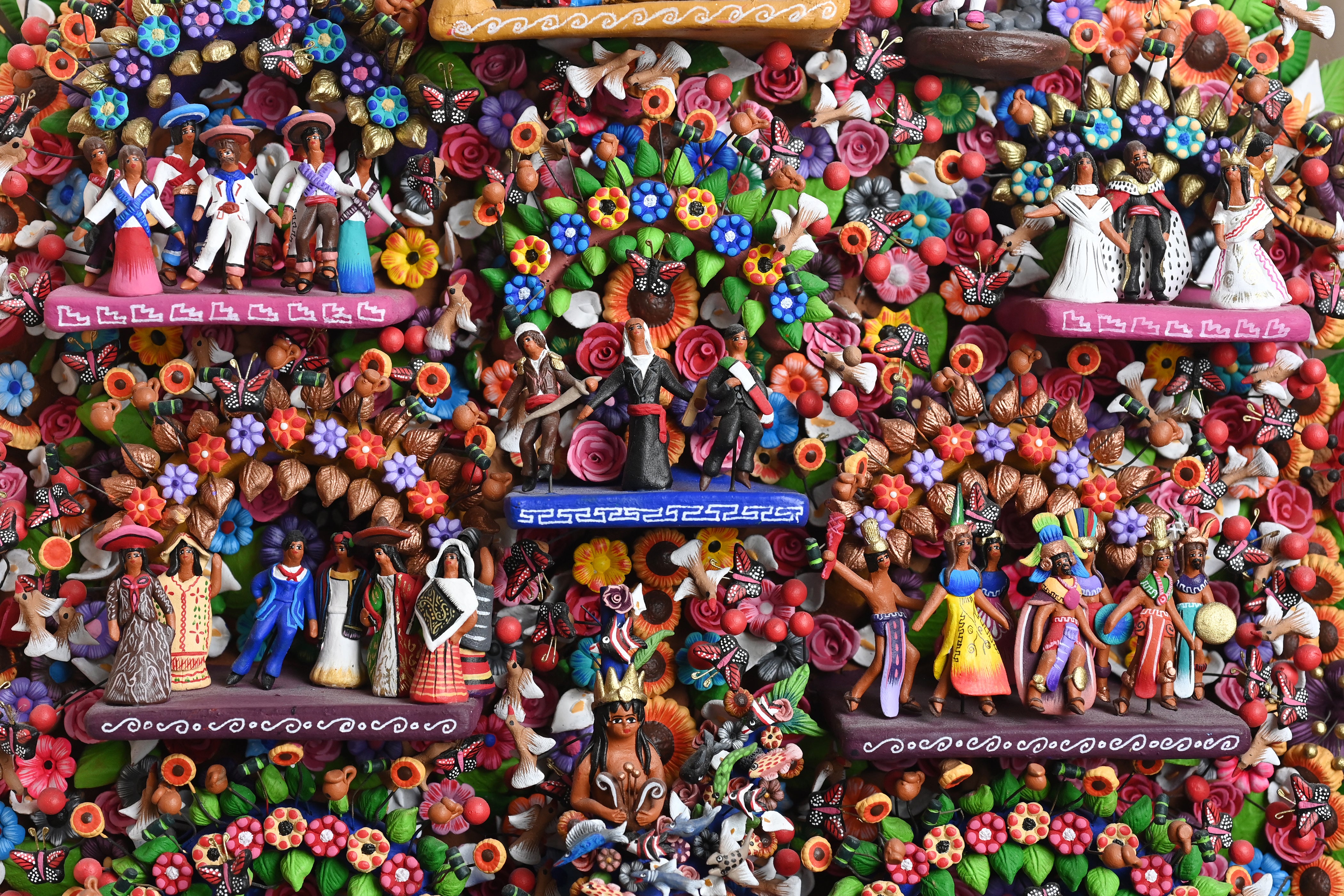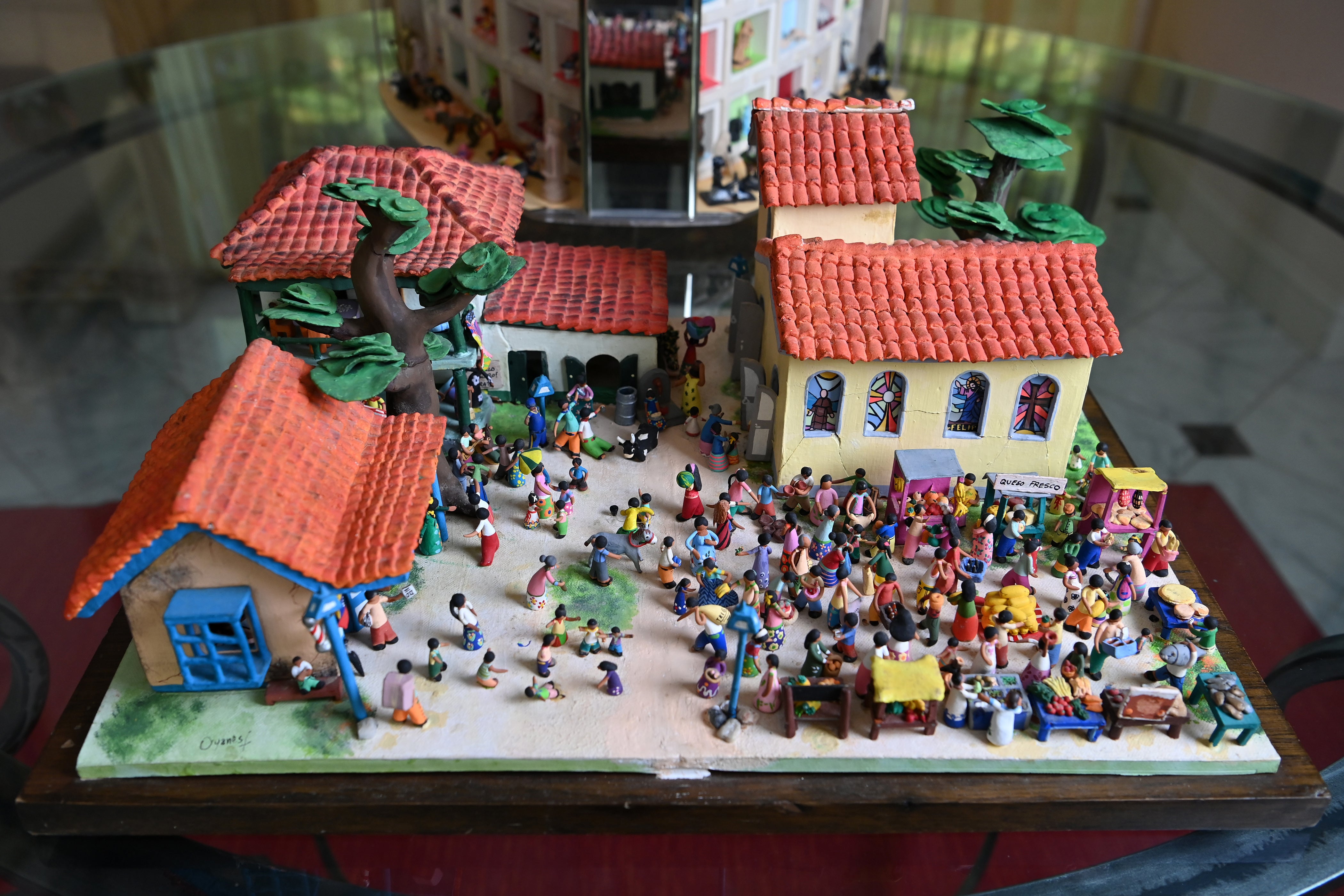The man who’s collected 16 rooms worth of miniature models from around the world
To Jorge Flores, miniatures are more than just a collection. He has become a patron to the craftspeople, writes Eddie Dean

Your support helps us to tell the story
From reproductive rights to climate change to Big Tech, The Independent is on the ground when the story is developing. Whether it's investigating the financials of Elon Musk's pro-Trump PAC or producing our latest documentary, 'The A Word', which shines a light on the American women fighting for reproductive rights, we know how important it is to parse out the facts from the messaging.
At such a critical moment in US history, we need reporters on the ground. Your donation allows us to keep sending journalists to speak to both sides of the story.
The Independent is trusted by Americans across the entire political spectrum. And unlike many other quality news outlets, we choose not to lock Americans out of our reporting and analysis with paywalls. We believe quality journalism should be available to everyone, paid for by those who can afford it.
Your support makes all the difference.It’s Sunday in a typical village in Venezuela. The Mass in the cathedral is over and the market square is packed. There are fishmongers, queso fresco vendors, a newspaper hawker, kids playing hide-and-seek and other games and, in the centre of the commotion, a cow that’s parked itself near the church door.
The figures are as small as Jorge Flores’s eyeballs as he peers into the window of the barbershop, like Gulliver in the land of Lilliput. He points out an inch-high man getting a shave next to another tiny customer reading a newspaper. Then his eyes dart back out to the crowd, where he points to a girl in a ring-around-the-rosie circle who’s tumbling to the ground after losing her grip in the chain of hands.
“This is a very funny moment the artist put into the scene,” says Flores with an impish smile. “That’s what miniatures are all about – the details and the craftsmanship and the charm. This is art. It doesn’t have to be a Raphael to deliver a message of joy and fun.”
The elaborate and exuberant set of nearly 200 pieces, moulded from clay and hand-painted in vibrant colours, was made by a woman in a craft shop in Caracas more than 50 years ago. It’s one of the thousands of such miniatures from around the world displayed in the Maryland, US, home of Flores, 74, who has spent half a century amassing his collection.
There are strutting roosters from Portugal; a pearl from China handwritten with poetry; Navajo Kachinas dancing in feathered ceremonial regalia; trolls from Norway; a marimba band from Mexico whittled from toothpicks; bronze gods and cornhusk dolls from Nepal; model ships from Vietnam; an ebony Noah’s Ark from Malawi; a half-inch Don Quixote twisted from a single strand of wire; minuscule food dishes from Thailand; a spotted cow from Germany licking its side with a tongue out of a Tex Avery cartoon; a sandalwood figurine from India of a Rajasthani woman in a traditional dress, with hidden pocket-drawers that reveal famous royal maharajahs and epic battle scenes with warriors and elephants; and a street peddler from the Salvadoran town of Ilobasco (when you lift the lids of her pottery, there are also “live” armadillos for sale).
The artists are poets. They enjoy the work they do. It brings out their soul and goes into every piece they make
Flores’s vast mini-world fills 16 rooms. It’s a staggering display of visually arresting objects that can be an overwhelming experience when you take the host-guided tour. Just when you think you’ve seen – or maybe hallucinated – it all, Flores ushers you into yet another room with shelves of more small-scale wonders waiting their turn in the spotlight. By his own estimation, there are between 80,000 and 100,000 figures in roughly 4,000 sets.
Incredible as it may seem after viewing his stash, Flores is a discriminating, finicky connoisseur who rejects most of what he comes across in his never-ending quest. He has strict criteria for what makes the cut: the piece has to be handmade and meet his standards of creativity and workmanship. Most important, it has to bring a smile to his face.
Most of the sets come with a backstory about the artist and how Flores tracked the piece down in a far-flung part of the globe. Take one of his favourites, a set of carved wooden figures from Mozambique. It depicts a real-life event during a deadly flood in 2000 when a pregnant woman escaped the rising waters by climbing a tree, where she gave birth. The set features the dramatic scene when she and her baby girl, Rosita, are rescued by helicopter. “Every year on her birthday, Rosita is in the newspapers with a new photo and story about her life,” he tells me. “They still remember her in Mozambique.”

As with many of the countries represented in the collection, Mozambique is not just a place on a map for Flores. He worked on malaria vaccines with a clinic based there during his time as an infectious diseases expert with the National Institutes of Health (NIH).
In the last decade, his collection has more than doubled in size, and he has become a patron as well as a collector. He and his partner, Elizabeth, who accompanies him on search expeditions, have befriended many of the miniatures artists. One is the Jangid family of Jaipur, India, who come from a long line of traditional woodcarvers. The exquisitely wrought figurine of the Rajasthani woman is one of many pieces he has commissioned from the family. For Flores, it’s a way of not only adding to his stash but helping to financially support the practitioners of a dying art.
“They are poets,” Flores says of the artists. “They enjoy the work they do. It brings out their soul and goes into every piece they make. They have a lot of originality and craftsmanship, and they deserve to be known outside their villages.”
It was a homely frog prince, tiny as a thumbnail, that first helped spark Flores’s obsession. He bought the German-made, painted-wood piece for 70 cents at a shop in Cambridge, Massachusetts, where he was a clinical research fellow at Harvard Medical School in the early 1970s. His collection soon expanded after trips to Mexico, a destination for folk-art miniatures, including fleas in traditional dress performing a hat dance.

It wasn’t long before the completist streak of his miniature mania took hold. “I think you have to have the passion for collecting that is kind of an unnatural gene defect,” he tells me. “Collectors collect because they’re curious and they want to bring things together and look at them all together. Let’s say that I had the New York Yankees in little figurines handmade by a rural artist, and if I didn’t have Mickey Mantle, it wouldn’t be complete, right? You have to have everyone from the team.”
His collection now includes 120 countries, with miniatures hotbeds like India, Mexico, Vietnam, Germany, Indonesia and Japan well represented. Recently he has been able to fill gaps by acquiring hand-stitched figurines depicting a crotchety old couple from Montenegro and a set of the earliest Christian churches from Armenia.
A friend and colleague, Dave Keuler, has seen the collection twice. “It’s an absolutely jaw-dropping display of artisanal mastery with pieces that reflect so many traditional cultures,” says Keuler, a clinical psychologist from Silver Spring. “It captures so much of what’s great about what it means to be a human being – that creativity and stick-to-it-ness and passion and desire to memorialise cultures.”
An avid antiques collector, Keuler thinks the pieces deserve a wider audience. “It feels like a national treasure,” he says, “and I hope it finds a place where it can be enjoyed by people. I hope it doesn’t end up in boxes.” Indeed, with his recent retirement after 32 years at NIH, Flores says he now wants to find space to open a miniatures museum in Montgomery County.
Recently, Flores acquired several prized sets that were custom-made for him by a Peruvian couple in Lima. The painstaking work took two years from commission to completion, and Flores says it was worth the wait.
One is a set of the National Children’s Symphony Orchestra of Venezuela conducted by Gustavo Dudamel. The artisan mistakenly put two batons in the hands of Dudamel instead of one. When Flores saw the pair of batons, he was delighted. “I won’t dare to ever change that,” he says, noting that it will give him a teachable moment if school groups ever visit his future museum: he will test the children’s knowledge of classical music by asking them what’s different about this conductor – aside from being very small.
The Washington Post




Join our commenting forum
Join thought-provoking conversations, follow other Independent readers and see their replies
Comments